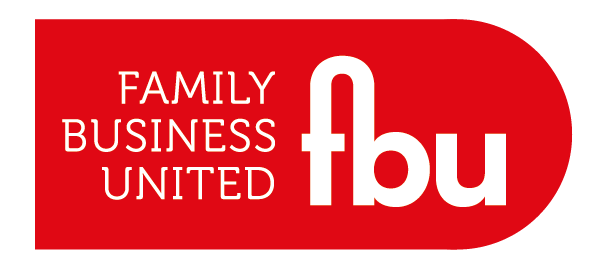Preparing To Retire From Leadership In a Family Business
- Paul Andrews - Founder & CEO, Family Business United

- Sep 25
- 4 min read

After decades at the helm of a family business—steering it through the highs and lows, the recessions and recoveries—retirement should be a time to relax and enjoy the fruits of your labour. Yet for many family business leaders, the thought of stepping aside is far from straightforward. In fact, it’s often one of the most emotionally fraught and strategically complex decisions they’ll ever make.
Succession is not simply about choosing a replacement—it’s about protecting a legacy, managing family expectations, and ensuring business continuity. And for founders or long-standing leaders, it can feel like handing over not just a company, but a piece of their identity.
So why is it so hard to let go—and how can you prepare to do it well?
Why Stepping Down Is So Difficult
1. Emotional Attachment
For many founders, the business is a life’s work—a living, breathing representation of their vision, sacrifices and determination. Letting go can feel like losing part of themselves. The fear is not just about what comes next professionally, but personally: Who am I if I’m no longer in charge?
2. Loss of Control
Even with a strong successor lined up, there’s often anxiety about how things will be run without them. Will decisions be made the same way? Will the values endure? For leaders used to calling the shots, becoming a bystander can be deeply uncomfortable.
3. Family Dynamics
Choosing who takes over can stir up family tension. Siblings may be rivals, in-laws may have differing views, and younger generations may not be ready—or willing—to take the reins. Navigating these dynamics requires sensitivity, fairness and courage.
4. Lack of Planning
Many leaders delay retirement simply because they haven’t made a proper plan. Without a clear roadmap, the future feels uncertain, and uncertainty leads to procrastination.
The Preparation Process: Start Early, Plan Thoroughly
Good succession is never accidental—it’s intentional. The earlier the process begins, the smoother it tends to be. Experts recommend starting the transition planning at least 5–10 years before retirement. Here's how to prepare:
1. Define Your Legacy and Vision
Before you hand over the business, clarify what success looks like post-retirement. Is it about growth? Stability? Innovation? Preserving family ownership? Defining your legacy helps shape the kind of leader you want to pass the baton to.
2. Identify and Develop a Successor
Whether it’s a son, daughter, niece, nephew or external candidate, your successor needs more than potential—they need preparation:
Assess skills and readiness objectively.
Offer progressive leadership roles before full transition.
Encourage external experience or education where needed.
Provide mentoring, but allow space for independent leadership style to emerge.
Don’t assume they’ll “just know” what to do because they grew up around the business.
3. Formalise the Process
Put everything in writing. Create or review:
A succession plan
Job descriptions for leadership roles
A shareholders’ agreement, if not already in place
An updated business strategy that reflects the next generation’s vision
Transparency and structure are key, especially when multiple family members are involved.
4. Involve the Whole Family
Hold family meetings. Talk openly. Bring in advisers or mediators if needed. This is not just a business transition—it’s a family one too.
Creating a family constitution or charter can help codify values, expectations, and dispute resolution processes. Everyone should feel heard, even if not everyone is actively involved in the business.
5. Define Your New Role (or Lack of One)
One of the most important steps is deciding what your role will be after stepping down. Will you be:
A board member?
A consultant?
A mentor?
Completely retired and hands-off?
Be clear—with yourself and others—about what you want, and what the business needs. Avoid being the “ghost in the boardroom”, undermining the new leadership with constant interference.
6. Plan Financially and Emotionally for Retirement
Beyond the business, retirement brings its own challenges. Make sure your personal finances are in order—whether through pension planning, selling shares, or creating a family trust.
And take time to plan how you’ll spend your time post-retirement. Hobbies, travel, volunteering, even new ventures can help fill the void left by stepping away from a daily leadership role.
Common Pitfalls to Avoid
Despite the best intentions, many transitions stumble due to avoidable mistakes. Here are some of the biggest:
Avoiding Tough Conversations
Don’t sweep difficult issues under the rug. Address them early, with honesty and diplomacy.
Assuming the Next Generation Is Ready
Enthusiasm does not equal capability. Make sure your successor is truly prepared—emotionally, technically and professionally.
Not Letting Go
It’s tempting to stay involved “just in case”. But hanging around too much can undermine authority, confuse staff, and delay real change.
Favouritism and Family Politics
Make decisions based on merit, not emotion. If necessary, bring in independent advisers to ensure fairness and avoid perceptions of bias.
Neglecting Staff and Stakeholders
Don’t forget to communicate with employees, suppliers and clients. A leadership transition is unsettling—reassure them with a clear plan and confident communication.
Letting Go with Grace
Handing over a family business is not about walking away. It’s about passing the torch—with confidence, clarity, and compassion. Done well, it ensures the business not only survives, but thrives under new leadership, while preserving the relationships and values that built it in the first place.
Retirement should not be feared—it should be embraced as the beginning of a new chapter. With proper planning and open communication, stepping down from leadership becomes not a loss, but a legacy.
The goal isn’t to leave the business—it’s to leave it in good hands.
Whether you founded the company from scratch or inherited it yourself, your final act as a leader can be your most important. Make it count.








%20copy%20(4)%20copy%20(1)%20copy%20copy%20(1)%20copy%20(1)-Medium-Quality.jpg)



.png)
























